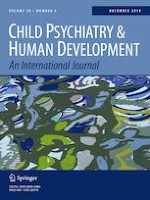26-04-2019 | Original Article
Attention to Peer Feedback Through the Eyes of Adolescents with a History of Anxiety and Healthy Adolescents
Gepubliceerd in: Child Psychiatry & Human Development | Uitgave 6/2019
Log in om toegang te krijgenAbstract
During adolescence, youth may experience heightened attention bias to socially relevant stimuli; however, it is unclear if attention bias toward social threat may be exacerbated for adolescents with a history of anxiety. This study evaluated attentional bias during the Chatroom-Interact task with 25 adolescents with a history of anxiety (18F, Mage = 13.6) and 22 healthy adolescents (13F, Mage = 13.8). In this task, participants received feedback from fictional, virtual peers who either chose them (acceptance) or rejected them (rejection). Overall, participants were faster to orient toward and spent longer time dwelling on their own picture after both rejection and acceptance compared to non-feedback cues. Social feedback was associated with greater pupillary reactivity, an index of cognitive and emotional neural processing, compared to non-feedback cues. During acceptance feedback (but not during rejection feedback), anxious youth displayed greater pupil response compared to healthy youth, suggesting that positive feedback from peers may differentially influence youth with a history of an anxiety disorder.
